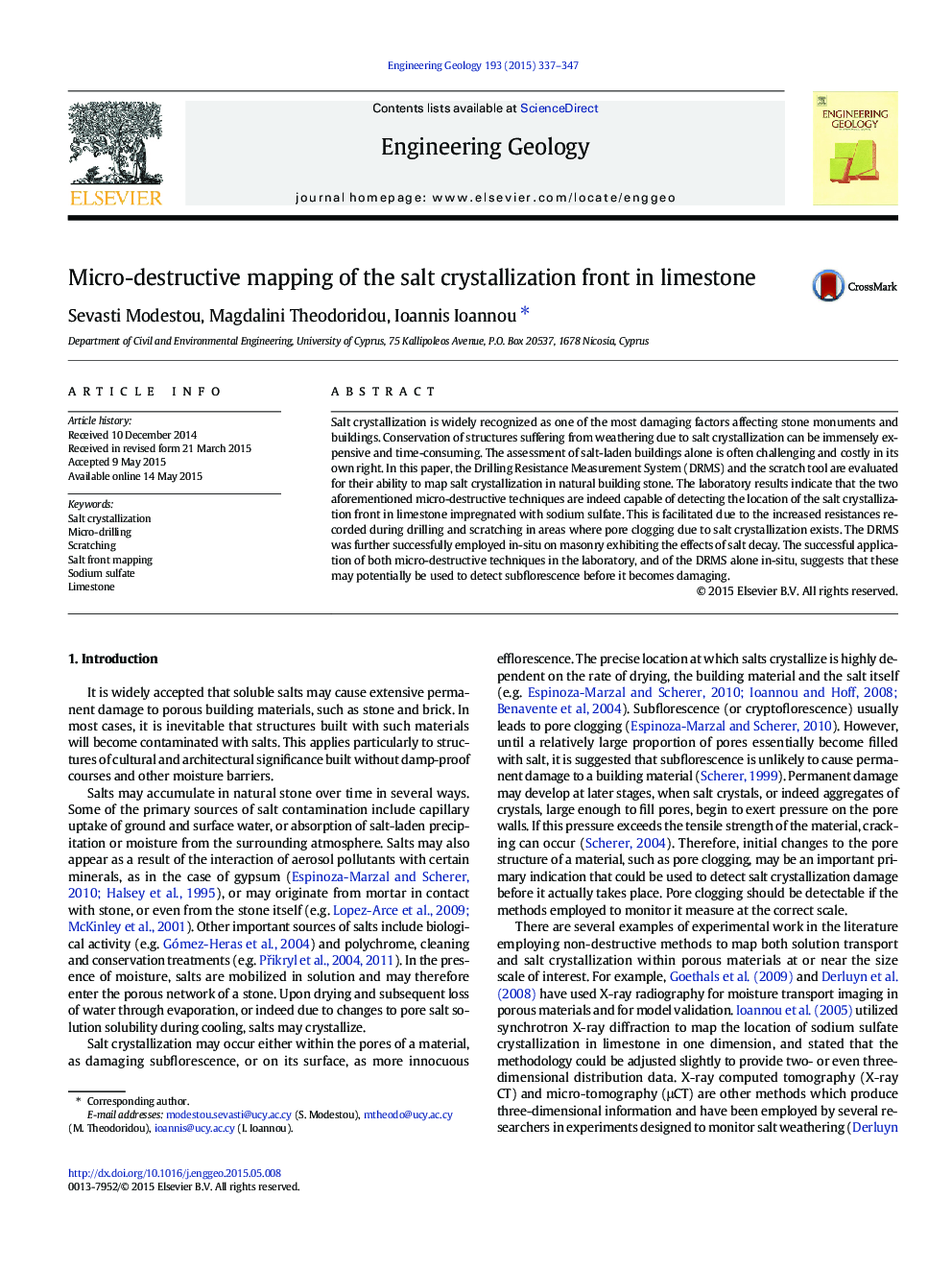| Article ID | Journal | Published Year | Pages | File Type |
|---|---|---|---|---|
| 6447761 | Engineering Geology | 2015 | 11 Pages |
Abstract
Salt crystallization is widely recognized as one of the most damaging factors affecting stone monuments and buildings. Conservation of structures suffering from weathering due to salt crystallization can be immensely expensive and time-consuming. The assessment of salt-laden buildings alone is often challenging and costly in its own right. In this paper, the Drilling Resistance Measurement System (DRMS) and the scratch tool are evaluated for their ability to map salt crystallization in natural building stone. The laboratory results indicate that the two aforementioned micro-destructive techniques are indeed capable of detecting the location of the salt crystallization front in limestone impregnated with sodium sulfate. This is facilitated due to the increased resistances recorded during drilling and scratching in areas where pore clogging due to salt crystallization exists. The DRMS was further successfully employed in-situ on masonry exhibiting the effects of salt decay. The successful application of both micro-destructive techniques in the laboratory, and of the DRMS alone in-situ, suggests that these may potentially be used to detect subflorescence before it becomes damaging.
Related Topics
Physical Sciences and Engineering
Earth and Planetary Sciences
Geotechnical Engineering and Engineering Geology
Authors
Sevasti Modestou, Magdalini Theodoridou, Ioannis Ioannou,
